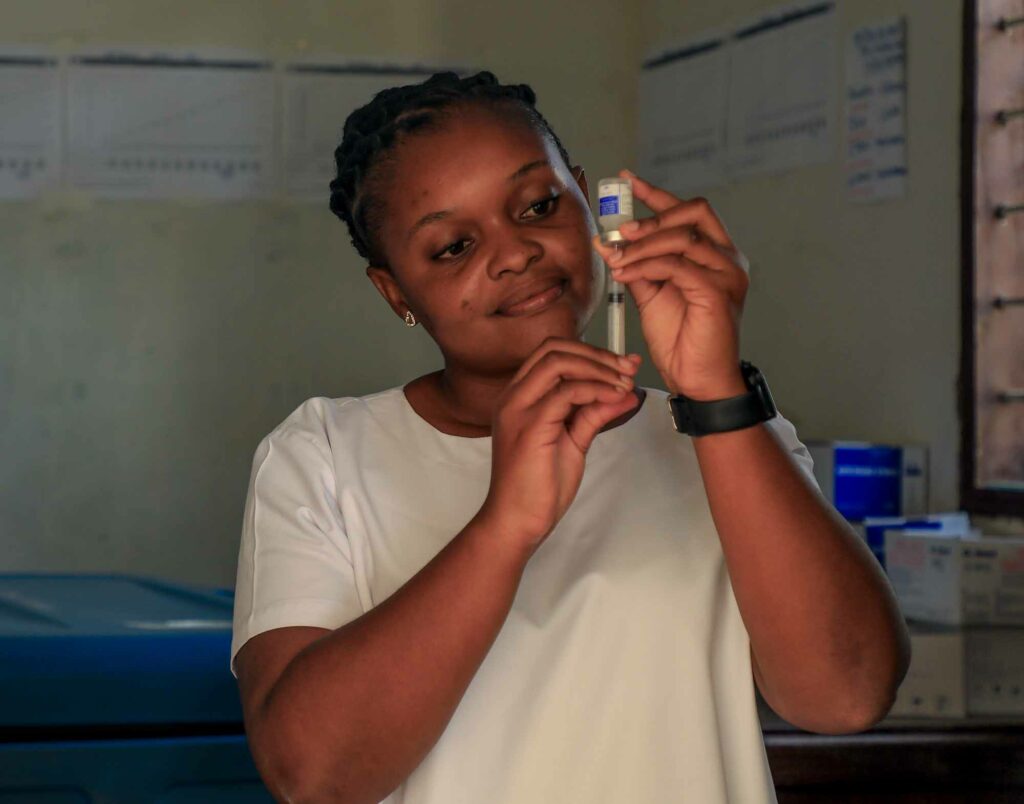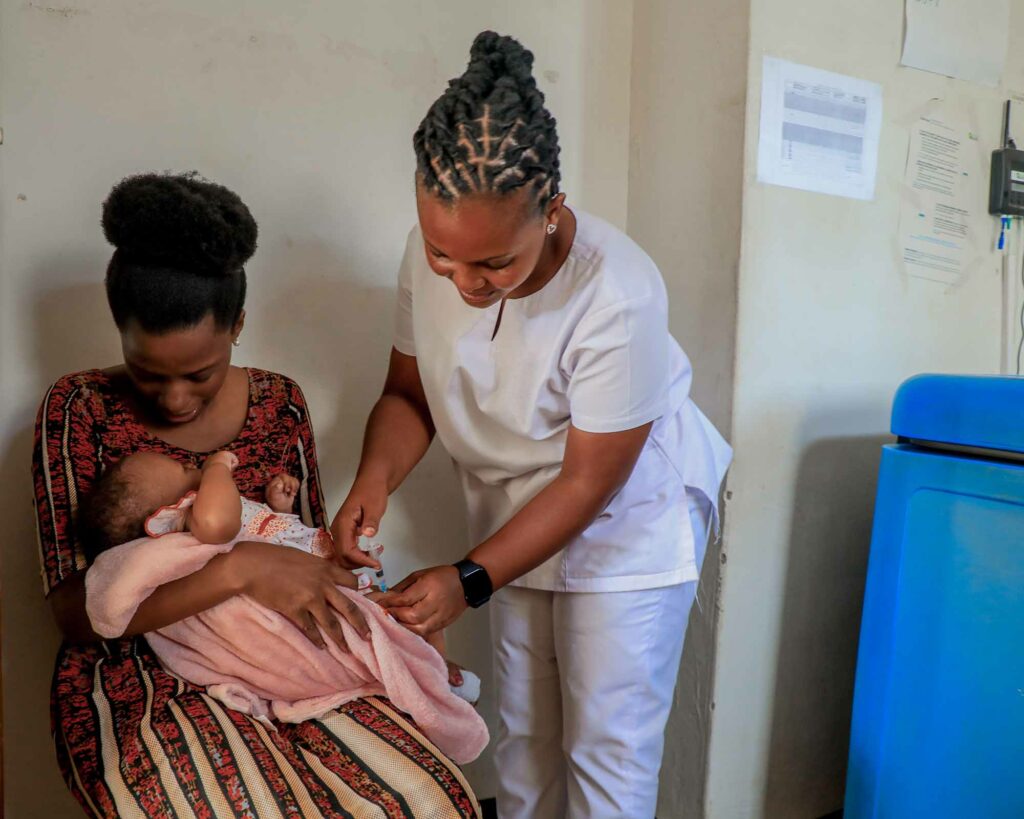“Reach Every Child” Strategy Is Showing Increase in Routine Vaccinations in Morogoro Region of Tanzania
Published on August 11, 2022

“In some villages, people don’t get their babies immunized,” states Yunis Yusuph Malende, a mother living in the Morogoro region of eastern Tanzania. “You can find many children with disabilities and sometimes it’s because they were not vaccinated. People in the community link vaccines to superstitions and so don’t get them.”
Morogoro’s Regional Medical Officer, Dr. Ukio Kusirye, agrees that the area is lagging in routine immunizations and cites various reasons, including the long distances many people must travel to access health services, limited human and financial resources, and lack of awareness on the importance of essential childhood vaccines.
Now, thanks to initiatives undertaken by regional authorities and development partners, including USAID’s MOMENTUM Country and Global Leadership, Morogoro is among the top five regions in Tanzania for uptake of childhood routine immunizations. According to Dr. Kusirye, support from MOMENTUM – in partnership with the Ministry of Health, President’s Office, Regional Administration, and local government – has helped to improve the region’s performance, particularly in districts with low childhood immunization standards.
Finding a Solution that Works
In five District Councils of the Morogoro Region — Kilosa, Morogoro, Ifakara, Mvomero, and Kilombero — MOMENTUM supported the use of an approach called “Periodic Intensification of Routine Immunization” (PIRI) to reach more children eligible for vaccination. PIRI involves using time-limited and intermittent campaigns to administer routine vaccinations to under-vaccinated populations. The approach helps to identify children who have missed out on essential routine vaccines, those who haven’t completed the full vaccine schedule, and ‘zero dose’ children—defined as children who did not receive their first dose of the pentavalent vaccine six weeks after birth.
Dr. Kusirye says the project sped up the process of reaching these children: “In addition to boosting children’s immunity, it also helped to identify areas which needed more attention to ensure that all children are reached with immunization services.”
PIRI campaigns can take many forms, and tactics depend on the context-specific channels that will best reach and be most meaningful to the group being targeted. These intermittent and targeted campaigns are a critical part of Tanzania’s overarching “Reach Every Child” strategy — an approach to long-term planning for routine service delivery where health facilities develop plans that describe how they will reach and serve every community within their area year in and year out.

In Morogoro, the PIRI approach included training health care workers on the proper storage of vaccines and on implementing the immunizations. Community health workers were also trained to identify children at the household level. Tulilumwa J. Lutango, the nurse vaccinating Yunis’ infant daughter, found the trainings to be invaluable, saying, “MOMENTUM supported us through the Reaching Every Child approach to reach entire villages and to identify children who were not immunized and get them vaccinated.”
The Mtibwa health facility where Tulilumwa works identified at least 2,000 children who were not vaccinated. “We managed to immunize 1,525 of that number,” she explains. “We have also used the knowledge to educate mothers on the importance of getting their babies vaccinated.”
The PIRI approach helped low performing districts to reach the project target for immunization coverage of essential vaccines such as the measles-rubella vaccine for children under 18 months. In Morogoro District Council, coverage of the second dose of the measles-rubella vaccine increased from 63 percent to 80 percent. Regional Immunization and Vaccination Officer Masumbuko Igembya said that the region implemented similar interventions in other District Councils to ensure that as many children were vaccinated as possible.
In Mvomero and Ifakara District Councils, for example, health workers were able to vaccinate 81 percent of the 4,742 zero dose children they identified.
Yunis feels grateful to be well cared for by her health facility, including being supported to get her child vaccinated: “I can say that at this facility, doctors and nurses are trying to make sure we have the right information when it comes to immunization. For me personally, I received the best service from the time of pregnancy to delivery.”


